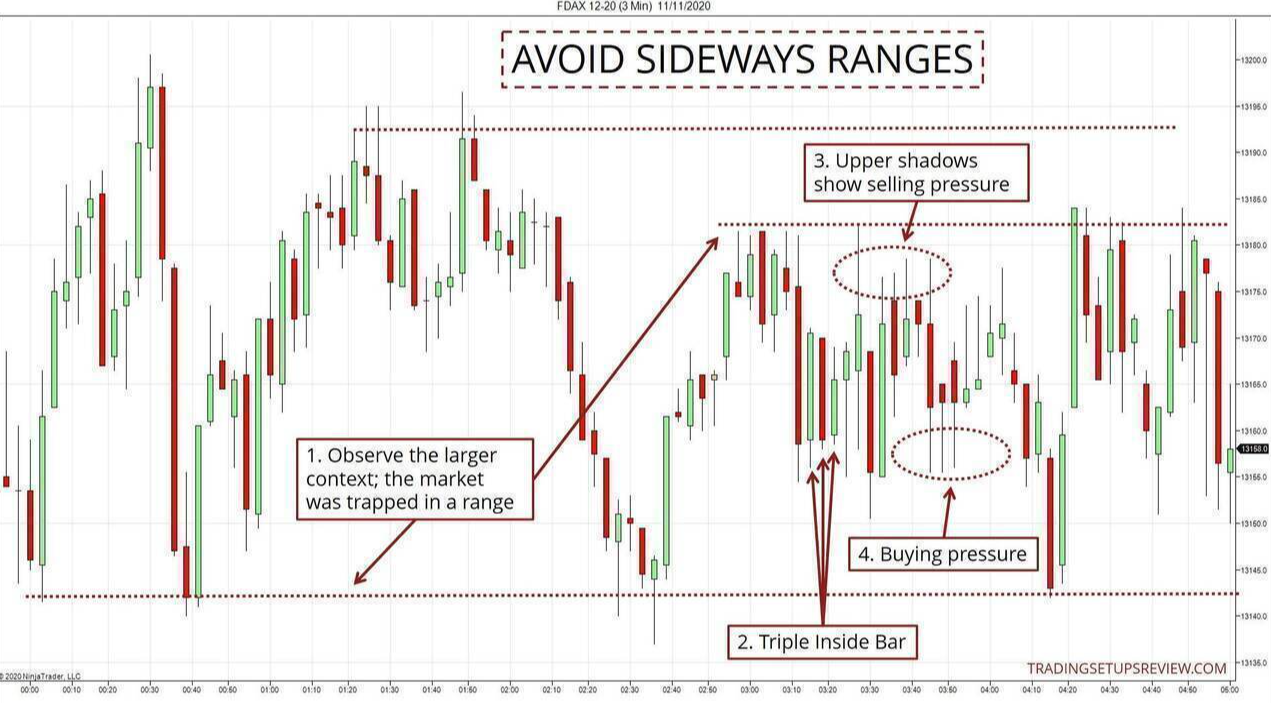Avoiding trading in sideways movement (also called consolidation or range-bound markets) is generally advised because it introduces certain challenges and risks that make profitable trading more difficult. Here’s why:
1. Low Profit Potential
- Tight Range:
When the price is moving sideways, it oscillates between a narrow range of support and resistance. The profit potential is much smaller compared to a trending market.
- Example: A 5% move in a sideways market might not justify the risk and transaction costs.
2. Higher Noise-to-Signal Ratio
- False Breakouts:
In a sideways market, prices often fake-out in one direction, only to reverse back into the range. This creates whipsaws that can hit stop losses.
- Trend-following indicators like moving averages or breakout strategies perform poorly in such conditions.
3. Unclear Market Direction
- No Momentum:
Sideways movement reflects indecision in the market. Buyers and sellers are evenly matched, and there’s no clear trend direction.
- Entering trades without a directional edge increases the likelihood of losses.
4. Transaction Costs Add Up
- Choppy Movements: In consolidation, frequent small moves cause you to enter and exit trades more often. Over time, transaction fees and slippage can significantly erode your profits.
5. Time and Emotional Drain
- Frustration and Overtrading: Sideways markets often tempt traders to take unnecessary trades due to impatience or boredom. This can lead to overtrading, compounding losses, and emotional stress.
6. Indicators Become Unreliable
- Trending Indicators Fail:
Tools like moving averages, RSI and trendlines are designed for trending markets. In a sideways market, they generate conflicting signals or multiple false entries.
- Example: RSI might bounce repeatedly around 50 without giving clear overbought/oversold signals.
When to Trade Sideways Markets
While it’s generally better to avoid trading in consolidation, there are exceptions:
- Scalping or Range Trading: If the range is clearly defined, experienced traders can buy near support and sell near resistance. However, this requires precision, quick execution, and discipline.
- Waiting for Breakouts: Sideways movement often precedes strong trends. Many traders avoid trading during consolidation but prepare to act on a breakout or breakdown.
Conclusion
Trading in a sideways market is inherently riskier and less rewarding compared to trading in trending conditions. Instead, it’s often better to:
- Wait for clear trends or breakouts before entering trades.
- Preserve capital for higher-probability setups.
